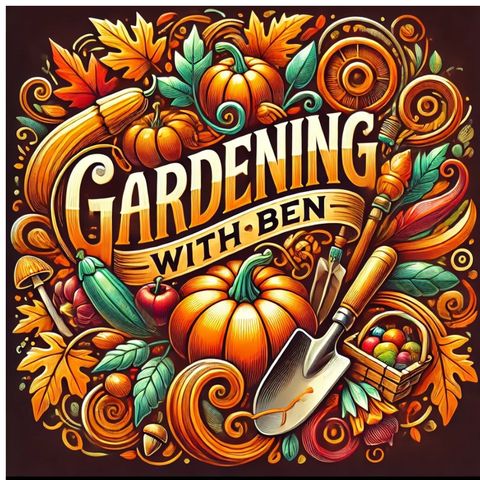"Nonstop Seed Sowing Day at the Allotment Garden"

Descarga y escucha en cualquier lugar
Descarga tus episodios favoritos y disfrútalos, ¡dondequiera que estés! Regístrate o inicia sesión ahora para acceder a la escucha sin conexión.
Descripción
Welcome to "Nonstop Seed Sowing Day at the Allotment Garden," your ultimate guide to a productive and rewarding day of planting seeds. As the gardening season kicks into high gear,...
mostra másPreparing for Seed Sowing
**1. Planning Your Day:** Before heading to the allotment, plan out your seed sowing activities. Make a list of the seeds you intend to plant, considering both cool-season and warm-season crops. Having a clear plan helps you stay organized and ensures you don't miss any essential tasks.
**2. Gathering Supplies:** Ensure you have all the necessary supplies ready. This includes seed packets, labels, gardening gloves, trowels, watering cans, and soil amendments like compost or organic fertilizer. Being well-prepared saves time and allows you to focus on planting.
Choosing the Right Seeds
**1. Cool-Season Crops:** In early spring, focus on sowing cool-season crops such as lettuce, spinach, peas, and radishes. These vegetables thrive in cooler temperatures and can be planted directly into the ground.
**2. Warm-Season Crops:** For a head start on the growing season, consider starting warm-season crops like tomatoes, peppers, and cucumbers indoors. Transplant them to your allotment once the danger of frost has passed.
Seed Sowing Techniques
**1. Soil Preparation:** Healthy soil is crucial for successful seed germination. Test your soil’s pH and nutrient levels to determine if any amendments are needed. Add compost or well-rotted manure to enrich the soil, ensuring it is loose and well-draining.
**2. Sowing Depth and Spacing:** Follow the instructions on your seed packets for the correct sowing depth and spacing. Planting seeds too deep or too close together can hinder germination and growth. Use a trowel or your finger to create shallow trenches or holes for the seeds.
**3. Labeling:** Clearly label each row or section with the seed type and planting date. This helps you keep track of what you’ve planted and monitor the progress of each crop.
Watering and Care
**1. Initial Watering:** After sowing your seeds, water the soil gently but thoroughly. Ensure the soil remains consistently moist until the seeds germinate. Avoid overwatering, which can lead to rot or fungal diseases.
**2. Ongoing Care:** As your seeds begin to sprout, continue to water regularly, especially during dry spells. Thin out seedlings if they are too crowded, giving each plant enough space to grow. Regularly check for pests and take appropriate measures to protect your young plants.
### Mulching and Weed Control
**1. Mulching:** Apply a layer of organic mulch around your seedlings to retain soil moisture, suppress weeds, and regulate soil temperature. Mulching also adds nutrients to the soil as it decomposes, promoting healthy plant growth.
**2. Weed Control:** Keep your allotment free of weeds to prevent competition for nutrients and water. Regular weeding is essential, especially during the early stages of plant growth. Use a hoe or hand tools to remove weeds from garden beds and pathways.
Listener Questions and Success Stories
We love engaging with our listeners! In this episode, we feature your questions about seed sowing and share success stories from fellow gardeners. Whether you need advice on specific challenges or want to celebrate your achievements, this segment is all about community and learning from each other.
Conclusion
"Nonstop Seed Sowing Day at the Allotment Garden" is your comprehensive guide to a productive and enjoyable day of planting. With expert tips, practical advice, and inspiring stories, this episode will help you ensure a successful start to your gardening season. Tune in, subscribe, and join us as we explore the joys and challenges of seed sowing. Happy gardening!
Información
Copyright 2024 - Spreaker Inc. an iHeartMedia Company
